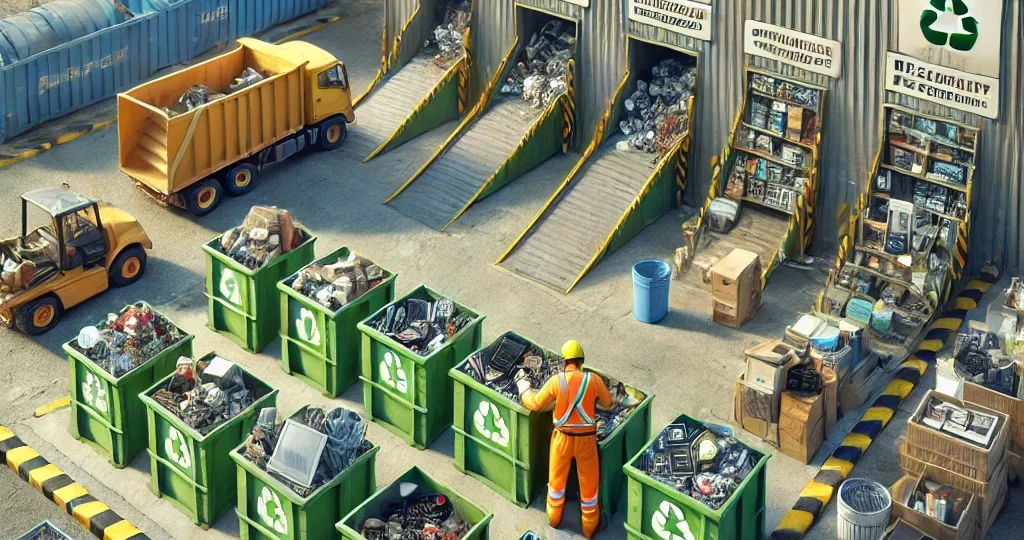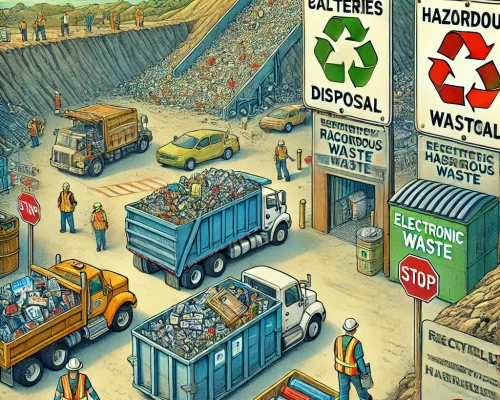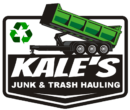
Junk Removal Regulations In California: What Can You Legally Throw Away?
Junk Removal Regulations In California: What You Need to Know
Junk removal regulations in California are among the strictest in the country. California law prohibits disposing of any hazardous waste in the regular garbage.
This is because seemingly common products (from batteries to leftover chemicals) can leak toxins, cause fires, or otherwise endanger sanitation workers and the environment if tossed in landfills.
The state’s goal is to keep dangerous materials out of landfills, protect public health, and encourage recycling. As a result, residents and businesses must be careful about what they throw in the trash.
Just because an item fits in your bin doesn’t mean it’s legal to dispose of it there – you may need special handling or recycling for many things. Understanding these rules helps Californians avoid fines and do their part for a cleaner environment.

If you’re unsure about how to dispose of certain items, our team can help. Visit our junk removal services page to learn more about how we can assist with responsible disposal and recycling.
Common (and Surprising) Items You Can’t Throw in the Trash
There’s a long list of items illegal to throw into the trash in California. Some of these banned items might surprise you because people often toss them out unaware of the rules.
Here are some key examples of what cannot go in your regular trash bin:
Our skilled team disassembles and breaks down your swing set into manageable pieces. We use the right tools to safely disassemble even the most complex setups, including jungle gyms, monkey bars, and playhouses.
Once dismantled, we swiftly remove all components, leaving your backyard clean and spacious.
Batteries and Light Bulbs
All types of batteries (AA, AAA, C, D, button cells, rechargeable packs, car batteries, etc.) are considered hazardous waste and cannot be discarded in household trash.
They contain metals and chemicals that can leak or spark fires in garbage trucks. The same goes for light bulbs and fluorescent lamps – even LED bulbs contain toxic metals and should not be thrown away.
Electronic Waste (E-Waste):
California law makes it illegal to throw away electronic devices of any kind in the trash.
This includes old TVs, computer monitors, laptops, phones, printers, microwaves – basically any gadget with a circuit board or battery.
Electronics contain heavy metals (lead, mercury, cadmium) that can leach into soil and water if landfilled. Since 2006, California has banned all e-waste from landfills, requiring that electronics be recycled instead.
(By contrast, in some states it’s still legal for households to toss electronics, but not in California!)
Household Chemicals and Paints:
Many common household chemicals are classified as hazardous waste. For example, unused or old bottles of solvent-based paint, paint thinner, pesticides, pool chemicals, cleaners, and other flammable or poisonous substances must not go in the garbage.
Even non-empty aerosol cans that contain hazardous contents (like spray paint or certain cleaners) are banned from the trash.
These items often have special drop-off programs through local Household Hazardous Waste (HHW) facilities.
Automotive Products, Tires, and Auto Glass:
Car-related wastes are also regulated. Used motor oil, oil filters, antifreeze, and car batteries absolutely can’t be tossed in the dumpster – they’re toxic and recyclable.
Tires are another surprise: while not toxic, whole tires are banned from California landfills and trash bins. Tires in dumps can breed mosquitoes and pose fire risks, so you’re required to take them to a proper tire recycling or disposal center.
Auto glass is another material that shouldn’t be disposed of in regular trash. According to David from Very Smooth Auto Glass, windshield glass is manufactured with specialized coatings and laminates, making it difficult to recycle through standard glass programs.
Many auto glass shops and recycling centers accept broken windshields for proper disposal to prevent unnecessary landfill waste.
Comparing Waste Disposal Regulations
While California enforces some of the nation’s most rigorous waste disposal laws, other states take a more relaxed approach. Mississippi, Alaska, Montana, South Carolina, and Wyoming have notably fewer restrictions on what can be discarded in regular trash.
Unlike California’s outright bans on e-waste, hazardous household waste, and automotive fluids in landfills, these states rely more on voluntary recycling programs rather than strict mandates.
For example, Mississippi and Montana do not have statewide bans on e-waste, meaning residents can legally discard items like old televisions and computers in their household trash.
Alaska’s remote communities often lack waste enforcement, allowing large appliances and untreated waste to end up in landfills. South Carolina does have an e-waste landfill ban for specific electronics, but still permits other hazardous household items to be disposed of in regular trash.
Wyoming, with its low population density, has fewer waste enforcement policies, meaning materials that require special disposal in California—such as fluorescent bulbs and automotive fluids—can often be legally tossed in standard garbage bins.
While these looser regulations may seem convenient, they can contribute to higher environmental risks due to improper disposal.
Compared to California, where stringent regulations help divert hazardous materials from landfills, these states offer minimal oversight and rely on voluntary recycling efforts rather than enforceable waste management policies.
Final Thoughts
Living or doing business in California means adjusting to a world of trash rules designed to protect our environment.
While it might feel inconvenient to remember all the things you can’t just throw away, these laws have a purpose: preventing pollution, promoting recycling, and ensuring hazardous materials are handled safely.
By knowing about the items you legally cannot toss in the trash, you can avoid fines and more importantly help California lead the way in sustainable waste management.
For a deeper look into the junk removal industry, check out our comprehensive report: The State of Junk Removal in 2024: 100 Stats that Tell the Whole Story.
We’re here to help with all your junk removal needs. Reach out to us today to get a quote or schedule a service:
KALE’S JUNK & TRASH HAULING
ADDRESS: 915 HIGHLAND POINTE DR SUITE 250 #2005 ROSEVILLE, CA 95678
CALL/TEXT: (916) 295-2622
Don’t wait—call us now to see how we can make your space clutter-free!
Ready to clear out the clutter and reclaim your space? Connect with Kale’s Junk & Trash Hauling today to experience top-notch service with a personal touch. Whether you need a quick consultation or want to request a free estimate, we’re just a call or a click away.
Visit our Contact Page or call us at (916) 295-2622 to get started!
Yard Trimmings and Food Scraps:
As of 2022, California law requires organic waste to be kept out of regular trash. Food scraps, yard trimmings, and food-soiled paper must go into compost or an organics collection bin.
Statewide organics recycling is now mandatory, and enforcement under SB 1383 began in 2024, with potential fines for non-compliance.
Placer County takes a unique approach to compliance by using a Materials Recovery Facility (MRF) that sorts organic waste from mixed trash, reducing the need for residents to separate it at the source.
Large food-generating businesses must also establish food recovery agreements to ensure surplus edible food is donated instead of discarded.
While some residents may still be adjusting, compliance is essential for meeting state environmental goals.
